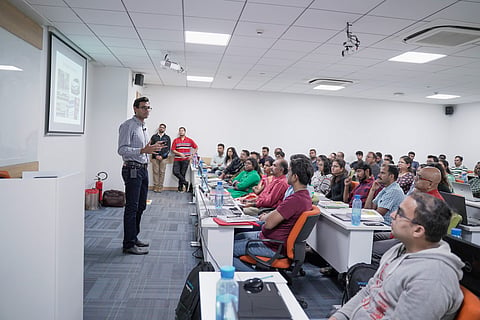

Three students from Great Learning Chennai conducted research to devise a machine learning model to predict the perpetrators of a terrorist attack based on certain information about the terror incident. Titled Global Terrorism- A Machine Learning approach to predict the perpetrator group using incident information, Farzan Sajahan, Sendil A B, and Akshaya Srivatsan conducted the research as a part of their PG Programme in Data Science and Business Analytics.
It is not easy to identify the terrorist group behind an attack due to factors like false alarms and non-declarations. Their model examines crucial factors like the location of the attack, location type (for example private property, defence campus, etc.), mode of attack, and socio-economic data of the country to predict the group who were most likely behind the attack. For the research, the team constructed a consolidated database on global terror incidents from 1990 to 2018 across approximately 180 countries with their socio-economic indicators. They further merged the data from several reliable sources such as the Global Terrorism Database (GTD), the World Bank and the United Nations, to name a few, and used the dataset to train appropriate ML models, including naïve Bayes, Support Vector Machines, and Random Forest.
"Machine learning models offer you a great amount of insight into the data, we can slice the data in various ways and then eventually deduce the pattern to understand what's going on. We can also try to reconstruct them to predict what can happen in the future. In this case, we had multiple objectives. First, to predict how many terror incidents would happen in a given period based on the socio-economic factors. For example, Country A has a 1000 terror incidents over a span of a few years because the Country A's GDP is low, and based on several other socio-economic parameters we determine that outcome. For our research, we had more than 30 different variables that we looked into which is truly important for this particular analysis. Something that we found is that if a country has a massive amount of social disparity- the probability of having more terror incidents is higher and if the country is economically weak, a higher level of terror activities is possible. We put all these variables together including the data about how many incidents these countries have already had such incidents to formulate the model," explains Farzan.
Based on the incident itself, the team could also predict which terror group might have conducted a certain incident. "That outcome is mostly related to forensics. Every perpetrator leaves behind something so from that we can determine which location it happened, each of them has a unique way of attacking, what kinds of weapons they used, which group they target etc," he adds. According to the researchers, the model can detect the perpetrators with an accuracy rate of at least 80 per cent, which is quite a remarkable outcome they feel. They took around six months to complete the research.
Speaking on why they chose to work on a subject like this, Sendil tells us, "We wanted to choose something that will take us out of our comfort zones, something that we hadn't worked on before. It was also quite challenging as it included a massive dataset and a lot of information that we had to analyse in order to create an effective ML model."
Responding to why these chose to devise a machine learning model for this, Farzan tells us that the data could be analysed with multiple methods. However, such a massive size of the dataset as for their research cannot be analysed just on an excel sheet. "The outcome will also be limited, if you want to build a prediction based on the dataset then machine learning is the way to go. Artificial Intelligence is there too, it is a lot more complicated," he explains.
